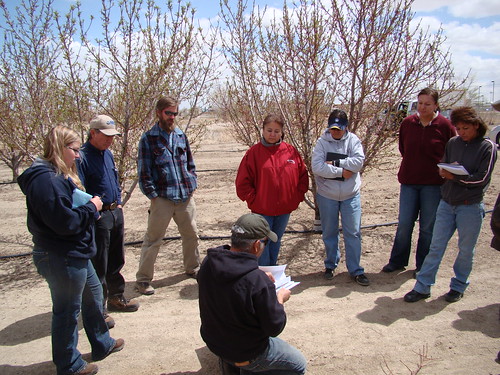
Lawrence Sanchez is a good farmer, businessman and member of his community, Tome, New Mexico.
Sanchez, like many farmers, is always looking to get the most out of his land. In 2009, he heard about an upcoming Sustainable Agricultural Workshop sponsored by USDA’s Natural Resources Conservation Service (NRCS) in New Mexico. Curious about the workshop, Sanchez decided to attend, and what he learned, he says, was invaluable.
NRCS New Mexico state agronomist Rudy Garcia created the workshop to promote the concept that improving soil health is the key to increasing production on the land. The one-day workshop is free and geared toward all private agricultural producers; Garcia has given it more than 50 times across New Mexico since 2008. In each workshop, producers are introduced to new methods of planning, developing, implementing and monitoring an Integrated Cropping System (ICS). The ICS consists of irrigation water management, cover crops, crop rotations, residue management, nutrient management, integrated pest management and conservation tillage.

Sanchez has applied what he learned from the Sustainable Agricultural Workshop and can see the results. “Because of improved forage quality, I have a waiting list of customers lining up for what comes out of my fields,” he says.
Sanchez has farmed his entire life and is now a strong believer in and supporter of NRCS practices. He attends many of the Sustainable Agricultural Workshops throughout New Mexico to see if he can learn something new and to provide testimony to other farmers about his success implementing what he learned from these workshops. Garcia is taking input from farmers like Sanchez, who have participated in the workshops, and creating best management practices (BMPs) for other farmers across the state.
The majority of agricultural producers in northern New Mexico are identified as minority or disadvantaged producers. For many of these farmers, NRCS’ Sustainable Agricultural Workshop provides a major opportunity for them to learn about new methods and sciences that can benefit their production capability.
Check out more conservation stories on the USDA blog.
Follow NRCS on Twitter.
